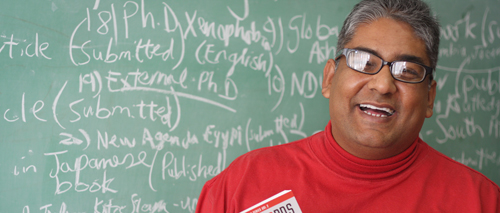
There has been much speculation if the recently announced ceasefire in Nigeria as well as talks with Boko Haram will indeed secure the release of about 200 girls kidnapped by this religious militant group.
Talks already started between the government and Boko Haram but there are still doubts if the girls will be freed and if the Nigerian government can successfully negotiate with Boko Haram. Prof Hussein Solomon, Senior Professor at the University of the Free State, regards this current negotiations as a terrible idea.
“At a time when Boko Haram’s strength is escalating, the correlatory weakness of the Nigerian government is increasingly exposed. As Nigerians prepare for the next presidential elections, embattled President Goodluck Jonathan is increasingly desperate to negotiate with Boko Haram to secure the release of schoolgirls seized by the terrorists earlier this year and to negotiate a ceasefire. This is a terrible idea. It makes a mockery of the rule of law and of the thousands of innocent victims of the militant violence. More importantly, it will only serve to fuel the terrorists’ ambitions further as the powerlessness of the government is exposed.”
Prof Solomon says religious intolerance is on the rise on the African continent, with a concomitant rise in terrorist incidents. In Algeria, extremist terrorism carries the name of Jund al Khilafah or Caliphate Soldiers in Algeria. In Mali it is Ansar Dine or Defenders of the Faith. In Somalia it is Al Shabaab (The Youth). But none of these organisations come close to the carnage wrought by Nigeria’s Boko Haram (literally meaning Western education is forbidden).
Boko Haram has carried out more than 1 000 attacks since 2010, which has resulted in the deaths of 10 000 people and a further 6 million affected by this terrorist violence. The 300 000 Nigerian refugees who have fled this tsunami of terrorism and have sought refuge in neighbouring Cameroon, Chad and Niger, provide adequate testimony to the human costs of such terrorism. Boko Haram, meanwhile, has formed tactical alliances with Al Qaeda in the Islamic Maghreb, Al Shabaab and the Islamic State in Iraq and Syria (ISIS), which means that the groups are sharing intelligence, tactics and material support. This cooperation has also resulted in increasingly sophisticated terror attacks mounted by Boko Haram.
Read more about
Prof Solomon and his research.